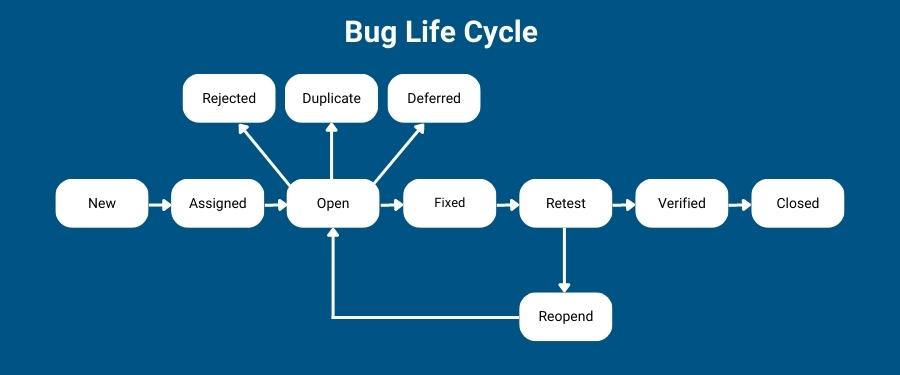As software testing is a crucial process in every Software Development Life Cycle (SDLC) ensuring high-quality software, companies will seek to hire the best available QA Testers and Test Engineers candidates. During a software testing interview, potential employers ask a variety of questions to assess a candidate's knowledge and experience in this field. These questions can range from technical inquiries about different testing terms to more general questions about the role of a tester in the software development process. Answering these questions effectively can be key to securing a job as a software tester. In this article, we will discuss 10 common software testing interview questions and how to approach them properly.

Q #1) What Is Your Experience with Software Testing?
The first question most candidates are asked in interviews is to provide a short brief about themselves. It's important to highlight your experience with software testing, including the types of software you've tested, familiarity with automation testing if existing, and testing tools you used. If it is your first job as a software tester do not worry about prior experience, you should give practical examples from relevant certifications you have or training you completed. It is also recommended to participate in crowdsourcing testing projects such as Digivante, Global App Testing, and Testlio to gain minimal experience.
Q #2) Which Phases Are Included in the Software Testing Life Cycle?
The most basic question new software testers are asked is to break down the phases in the software testing life cycle (STLC). The process of STLC outlines tasks and other activities, from the initial testing planning to test maintenance. These are the stages of the STLC:
- Requirements Analysis
- Test Planning
- Test Case Development
- Test Environment Setup
- Test Execution
- Test Closure
- Test Closure
Although you will not necessarily take part in all of these stages in your initial part of your career, understanding them helps you show hiring managers your conceptual understanding of testing and not just being a “task doer”.
Q #3) What Are the Different Test Types in Software Testing?
QA Testers are asked in interviews to classify different tests by their types. It is common to split the testing types into 2 main categories: functional testing and non-functional testing.
Functional testing is a type of testing that aims to ensure that a software application is functioning flawlessly and free of defects. In this type of testing, the tester compares the expected results with the actual results obtained from the software, using the requirement specification document as a reference. Tests that can be classified as functional testing include unit tests, integration tests, smoke tests, and others. Functional testing can be performed manually or automated, depending on the specific test being conducted.
On the other hand, non-functional testing evaluates other important aspects such as security, performance, and usability. These aspects are not related to the functionality of the software but are still crucial for ensuring that the software meets the required standards. Non-functional testing is typically performed after functional testing and is often automated using specialized tools. Examples of non-functional tests include load testing, stress testing, and accessibility testing.
Q #4) Describe the Bug Life Cycle
The bug life cycle (also known as defect life cycle) is the process that bugs go through from the moment it is detected by the software tester till the time they are fixed. The process may vary in different organizations but this is the most typical bug life cycle process in software testing:

Q #5) What Is the Difference Between Black-Box, White-Box and Gray-Box Testing
There are 3 main software testing methods:
Black-box testing - focuses on the functionality of a software application, without looking at the internal source code. The tester creates test cases based on the requirements and expected behavior of the system and then evaluates the external behavior of the software to ensure that it is working correctly.
White-box testing - used to check only the internal structure and implementation of a software application. In this test method, the tester has access to the internal source code and uses this knowledge to design test cases to validate that all parts of the code are working properly.
Gray-box testing - a combination of elements from black-box and white-box testing. In this method, the tester has partial knowledge of the internal structure, without full access to the source code. This could help the tester execute tests that cover both external and internal aspects of the software.
Q #6) What Is the Difference Between Test Case, Script, and Scenario?
Test Case - a set of conditions and procedures that allow the tester to verify if a feature or function works as it should. A typical test case includes ID, a short description, test steps, expected results, and more.
Test Script - a set of instructions used for automated tests. The test script is written in a programming language such as Java and allows you to execute an automated test, based on it.
Test Scenario - a short description of a particular test that should be performed on a software application. The test scenario focuses on what to test from a high-level perspective on end-to-end functionality.
Q #7) Name a Few Soft Skills Every Tester Should Have
Software testers should have strong technical skills, but they also need to possess certain soft skills to excel in their roles. Some of the key soft skills that are important for software testers include:
- Communication Skills
- Teamwork and Collaboration
- Problem solving
- Adaptability
- Time management
- Attention to details
Q #8) What Is Exploratory Testing
Exploratory testing is a vital aspect of the software testing process that enables QA testers to test the software without being constrained by predetermined test plans, scripts, or other guidelines. This more "hands-on" approach allows testers the flexibility to detect bugs and vulnerabilities in areas of the software that have not been covered in formal documents such as test plans. Testers who conduct exploratory testing must use their creativity and test the software from an end-user perspective, without considering prior knowledge. This testing method is particularly effective when using an Agile approach, as it can be performed quickly and without preparation, allowing the testers to adapt their testing method in real time.
Q #9) Which Software Testing Metrics Do You Think Are Important?
Well, this is a challenging question, as there are many different essential software testing metrics to use regularly. The most important thing when choosing metrics is to ensure that they are covering your testing efforts from different angles (bugs, requirements, test execution, etc). Here are some of the most common QA metrics:
- Requirement coverage percentage = (Number of requirements covered / Total number of requirements) x 100
- Test execution coverage = (Number of executed tests / Total expected number of tests) x 100
- Passed tests = (Number of passed tests / Total number of executed tests) x 100
- Failed tests = (Number of failed tests / Total number of executed tests) x 100
- Blocked tests = (Number of blocked tests / Total number of tests executed) x 100
- Fixed bugs = (Number of fixed bugs / Total number of reported bugs) x 100
- Bug severity index = (bug*severity level) / Total number of bugs
- Escaping defects percentage = (Number of distinct defects discovered and reported by customers / Number of defects found before releasing the product) x 100
One important notion to address when selecting the desired metric, is to remember that what you measure is correlated with what you consider important. Choose metrics that are the most relevant to measure progression towards your goals, and not just for the sake of measuring.
Q #10) When Should Software Testers Stop Testing?
In order to keep your tests relevant and effective, it is vital to not only know when to begin testing, but also when to end it. Setting exit criteria that outline the goals of the testing process and indicate when it is appropriate to conclude testing can help guide this decision. When creating exit criteria, it is essential to consider a variety of factors such as identified defects, project timelines, test coverage, and more. By considering these factors holistically, and of course, communicating with developers and other stakeholders, you can effectively determine if a test is still providing valuable insights or if it should be discontinued.












